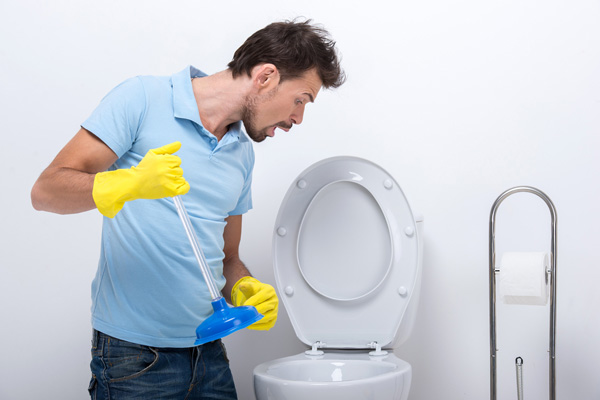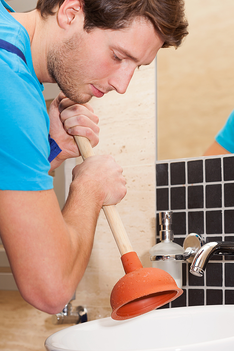Using Plungers and Drain Cleaners: Effective Strategies
Using Plungers and Drain Cleaners: Effective Strategies
Blog Article
Everybody has their own perception about A Guide to Plungers (and How to Use Them).

Intro
Correct upkeep of family drains pipes is necessary for protecting against obstructions and making certain smooth water circulation. One of the secret tools in every homeowner's toolkit is the plunger, along with numerous drain cleaners designed to take on stubborn clogs properly. This post checks out how to make use of plungers and drainpipe cleaners effectively to maintain your drains moving freely.
Area 1: Comprehending Plungers
Kinds of Plungers
There are numerous sorts of plungers offered, each made for different types of drains and blocks. The most usual kinds include mug bettors, flange plungers, and accordion plungers.
Exactly How Plungers Job
Bettors work on the principle of producing stress and suction to displace obstructions. When correctly applied over a drainpipe, they produce a vacuum cleaner that can take out particles or separate obstructions.
Picking the Right Bettor
Choosing the ideal bettor depends upon the kind of drain and the nature of the clog. Cup bettors are perfect for sinks and tubs, while flange bettors are much better matched for bathrooms because of their style.
Common Mistakes with Bettors
Staying clear of these errors guarantees effective plunging: inappropriate seal around the drainpipe, inadequate force, and unclear surrounding particles.
Area 2: Using Plungers Properly
Prep work
Before diving, guarantee the bettor covers the drain entirely and develops a limited seal. Clear any type of noticeable debris around the drainpipe opening.
Technique
Beginning with mild plunging motions to construct suction. Rise pressure progressively, making use of a steady rhythm. Repeat as necessary until the drainpipe clears.
Fixing Tips
If plunging doesn't work, try readjusting the seal, using oil jelly for a much better seal, or utilizing a different type of bettor.
Area 3: Comprehending Drain Cleaning Company
Sorts Of Drain Cleaners
Drain pipes cleansers can be chemical or enzymatic. Chemical cleansers utilize strong chemicals to liquify clogs, while chemical cleaners use all-natural enzymes to break down organic matter.
Just How Drain Cleaning Company Work
Chemical cleansers react with blockages to liquify them, while enzymatic cleansers break down organic materials like hair and oil without hurting pipes.
Safety and security Factors to consider
Always use gloves and eye defense when making use of chemical drainpipe cleansers. Make sure sufficient ventilation and comply with producer guidelines meticulously.
Eco-Friendly Alternatives
Think about using vinegar and cooking soda or enzyme-based cleansers for environmentally friendly alternatives that are safer for pipelines and the environment.
Section 4: Using Drainpipe Cleansers Properly
Application Strategies
Put chemical cleansers directly into the drainpipe opening. Permit them to benefit the advised time before flushing with warm water. Chemical cleaners should rest overnight.
Precautions
Stay clear of mixing various kinds of cleaners, as this can create harmful fumes. Never ever use chemical cleansers together with a bettor, as splashing can take place.
Dealing With Persistent Clogs
For consistent obstructions, think about making use of a pipes snake or calling an expert plumbing professional to prevent damage to pipelines.
Verdict
In conclusion, understanding exactly how to utilize bettors and drainpipe cleaners successfully is essential for maintaining healthy and balanced plumbing systems. By picking the right devices and techniques, home owners can deal with small blockages and prevent significant pipes concerns down the line.
4 DIY Ways to Unclog Drains
Wire Hanger
This age-old technique has been used by many an amateur plumber – to much success. Take any wire hanger, deconstruct its shape and leave a small hook shape on the end. Time to go fishing! Remove the shower or sink drain cover and snake the wire into the drain, wiggling and rotating it as you push it through. Dispose of the gunk that you remove and flush the drain with hot water. Rinse with a pan of boiling water for best results.
Plunger
Creating a suction in your drain can break up clogs caused by hair and soap residue build up. First, make sure you are using the correct type of plunger, one specifically for sinks or tubs. They are typically smaller than regular toilet plungers and often have a shallow suction cup. Regular plungers can work too but we’d recommend cleaning them first and finding a way to create better suction over the drain.
Baking Soda and Vinegar
This technique is a classic – and one of the most popular DIY drain unclog methods. Pour one cup of baking soda and one cup of vinegar down the drain and allow it to work its magic overnight. The next morning, flush the drain with boiling water. Repeat if necessary.
Drain Snake/Hair Clog Tool
If you know your clog is caused primary by hair, a drain snake/hair clog tool might be your best option. These tools can be purchased for under $10 at any hardware store and work well so long as the clog isn’t too deep in the drain.
https://www.callcatons.com/blog/four-diy-ways-to-unclog-drains/

Application Strategies
Put chemical cleansers directly into the drainpipe opening. Permit them to benefit the advised time before flushing with warm water. Chemical cleaners should rest overnight.
Precautions
Stay clear of mixing various kinds of cleaners, as this can create harmful fumes. Never ever use chemical cleansers together with a bettor, as splashing can take place.
Dealing With Persistent Clogs
For consistent obstructions, think about making use of a pipes snake or calling an expert plumbing professional to prevent damage to pipelines.
Verdict
In conclusion, understanding exactly how to utilize bettors and drainpipe cleaners successfully is essential for maintaining healthy and balanced plumbing systems. By picking the right devices and techniques, home owners can deal with small blockages and prevent significant pipes concerns down the line.
4 DIY Ways to Unclog Drains
Wire Hanger
This age-old technique has been used by many an amateur plumber – to much success. Take any wire hanger, deconstruct its shape and leave a small hook shape on the end. Time to go fishing! Remove the shower or sink drain cover and snake the wire into the drain, wiggling and rotating it as you push it through. Dispose of the gunk that you remove and flush the drain with hot water. Rinse with a pan of boiling water for best results.
Plunger
Creating a suction in your drain can break up clogs caused by hair and soap residue build up. First, make sure you are using the correct type of plunger, one specifically for sinks or tubs. They are typically smaller than regular toilet plungers and often have a shallow suction cup. Regular plungers can work too but we’d recommend cleaning them first and finding a way to create better suction over the drain.
Baking Soda and Vinegar
This technique is a classic – and one of the most popular DIY drain unclog methods. Pour one cup of baking soda and one cup of vinegar down the drain and allow it to work its magic overnight. The next morning, flush the drain with boiling water. Repeat if necessary.
Drain Snake/Hair Clog Tool
If you know your clog is caused primary by hair, a drain snake/hair clog tool might be your best option. These tools can be purchased for under $10 at any hardware store and work well so long as the clog isn’t too deep in the drain.
https://www.callcatons.com/blog/four-diy-ways-to-unclog-drains/

Do you like reading about How to Use a Plunger to Unclog a Toilet or Drain? Leave feedback down the page. We will be delighted to hear your ideas about this blog post. We hope that you come back again later on. Sharing is caring. You just don't know, you may just be helping someone out. I praise you for your time. Return soon.
Customer Reviews Report this page